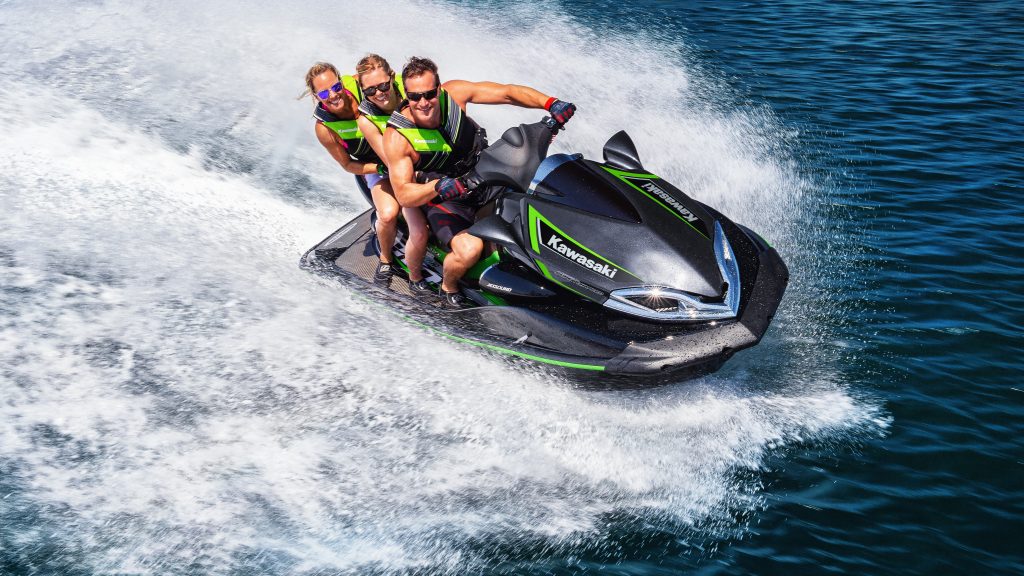Most mainstream insurance companies that cover cars, homes, and contents tend to shy away from Jet Skis and personal watercraft because, in their eyes, claim risks are high and specialist knowledge is required.
Fortunately there are insurance companies dedicated to Jet Skis and personal watercraft.
Four of the biggest insurance brands for Jet Skis and personal watercraft in Australia are Club Marine, Nautilus Marine, Yamaha Marine Insurance, and Kawasaki Jet Ski Insurance, although there are others. (These links, price estimates, and conditions were current as this article was published and are subject to change).
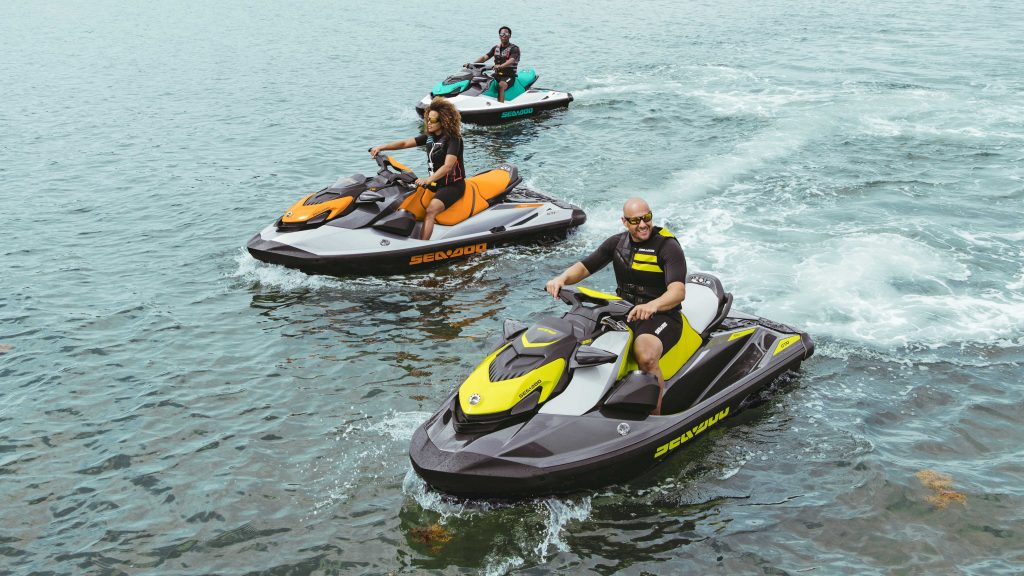
Insurance premiums, claim excess, new-for-old replacement policies, and exclusions are similar across these four major brands.
Some noteworthy differences: Club Marine has a 14-day cooling-off period while the others listed here (Nautilus, Yamaha and Kawasaki Insurance) have 21-day cooling-off periods from the time you sign up. Club Marine also won’t insure against fire and storm damage for the first 72 hours of a policy.
It’s worth reading the fineprint of each company’s Product Disclosure Statement so you know the conditions of your particular policy.
The information compiled here was accurate at the time of publication and is subject to change, and is meant to be a general guide only. Please check with your insurer how your policy affects your particular circumstances.
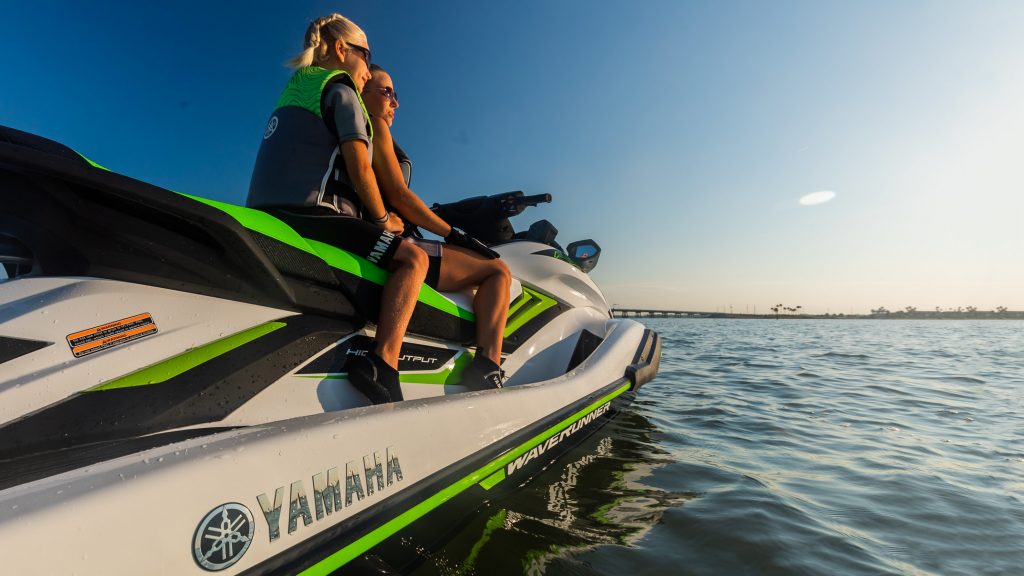
Cost
The cost of most insurance policies for Jet Skis and personal watercraft ranges from $1000 to $1400 per year for a craft and trailer that cost about $24,000 new.
This example is based on the watercraft being kept in a metropolitan area; the premiums in rural and regional areas can cost less than this because of the reduced risk of theft.
On a personal watercraft of this value, most insurers offer monthly payments which range from $100 to $120. Paying monthly comes with a price premium versus paying annually.
These costs are a guide only and could be cheaper or more expensive depending on the cost of your personal watercraft and trailer, where they are stored, and how they are secured.
This price guide is for someone who has had a PWC licence for less than five years and is relatively new to the sport.
The price of insurance premiums can come down as you accrue no-claim bonus discounts, and if you don’t make any claims.
However, if you make frequent claims the cost of insurance can go up.
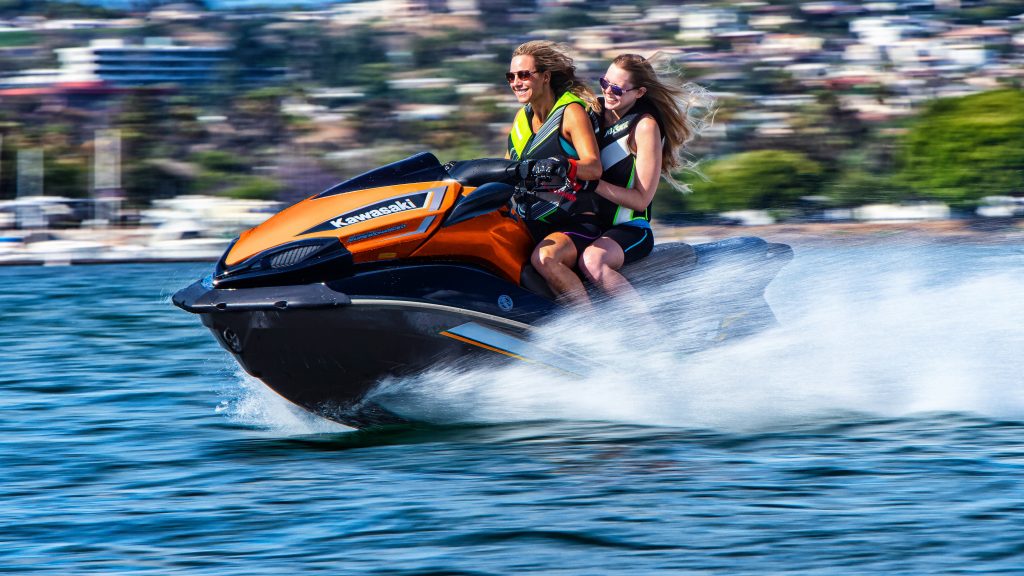
Cooling-off periods
Once you take out an insurance policy you have between 14 and 21 days to cancel the policy and receive a refund, providing you have not made a claim. The cooling-off period varies among the different insurers.
No-claim bonus discounts
Unlike house and car insurance policies which offer no-claim bonus discounts of up to 65 per cent, the loyalty savings on coverage for Jet Skis and personal watercraft are less generous.
Most Jet Ski and personal watercraft insurance policies have maximum no-claim bonus discounts of 25 or 30 per cent, and it can take between three and five years of not making any claims to achieve this level.
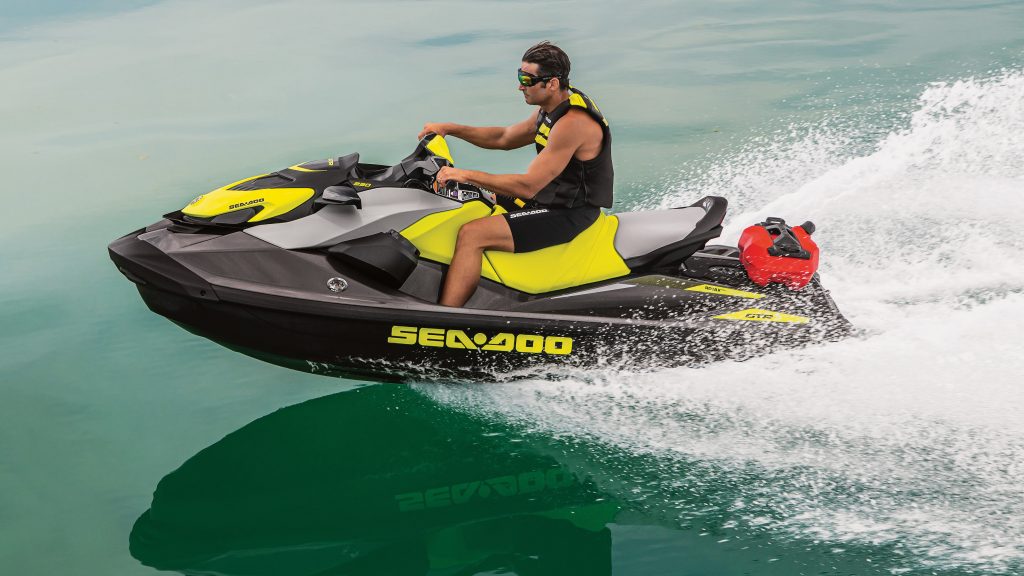
Insurance excess for Jet Ski and personal watercraft claims
Most specialist insurance companies give customers the choice of a reduced $200 or $250 excess, or a standard $500 excess. This decision must be made when taking out the policy as it affects the cost of the annual or monthly premium.
In our research, opting for the cheaper excess added about $300 to the annual premium. Which is, presumably, why most customers opt for the standard $500 excess.
However, this is only the basic insurance excess. The excess cost can increase depending on the circumstances of the claim.
The following are examples of claims which come with a higher insurance excess.
Age and experience penalties
Most insurance companies that cover Jet Skis and personal watercraft have an additional excess of $500 (on top of the standard $500 excess when making a claim) for people aged 25 or younger, or who have had held a PWC licence for less than two years.
This means if damage occurred to a Jet Ski or personal watercraft while it was being operated by someone aged 25 or younger – or who has held a PWC licence for less than two years – the insurance excess would increase from $500 to $1000.
However, insurance excesses can climb even beyond this, depending on the circumstances.
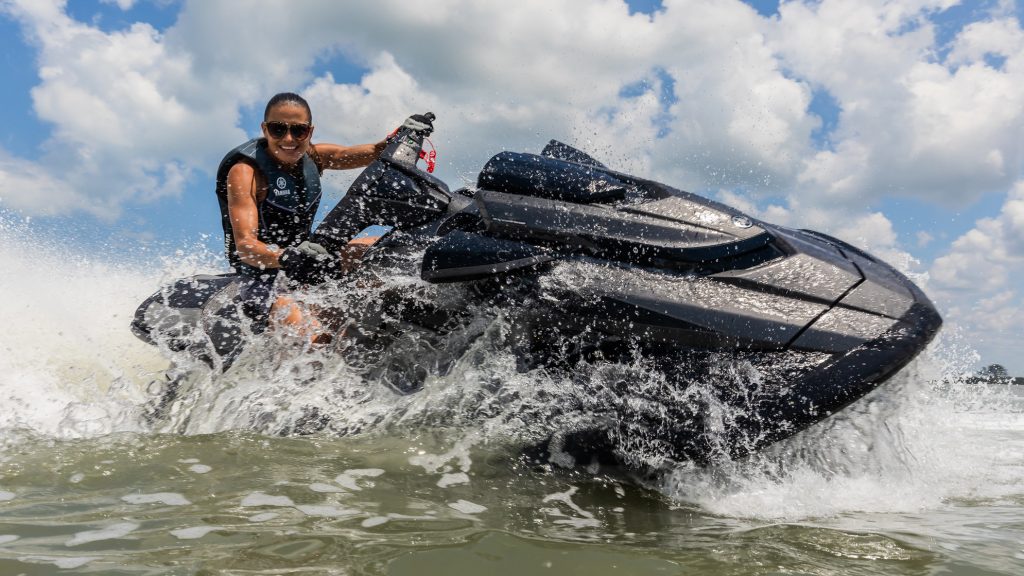
What if an unlicensed rider has an accident on my Jet Ski or personal watercraft?
Most insurance companies will not honour a claim if an accident occurs when the craft is operated by an unlicensed rider, someone who is affected by drugs or alcohol, or who has ridden in a negligent manner.
Some insurers also will not cover damage from accidents when travelling in excess of 65 knots (120kmh), though few watercraft are capable of this in standard condition.
Water damage after forgetting to secure drain plugs or “bungs”
Forgetting to secure or screw in the drain plugs or “bungs” at the rear of the hull before you launch your Jet Ski or watercraft is a common and costly mistake.
Without the drain plugs or “bungs” properly in place, Jet Skis and personal watercraft will take on water the moment they’re off the trailer.
This will cut the day short and lead instantly to a $5000 excess for, effectively, negligence.
Unfortunately, insurance policies we’ve seen don’t use simple language to explain what happens if a Jet Ski or personal watercraft takes on water, submerges, or sinks due to the drain plugs or ‘bungs’ not being properly in place.
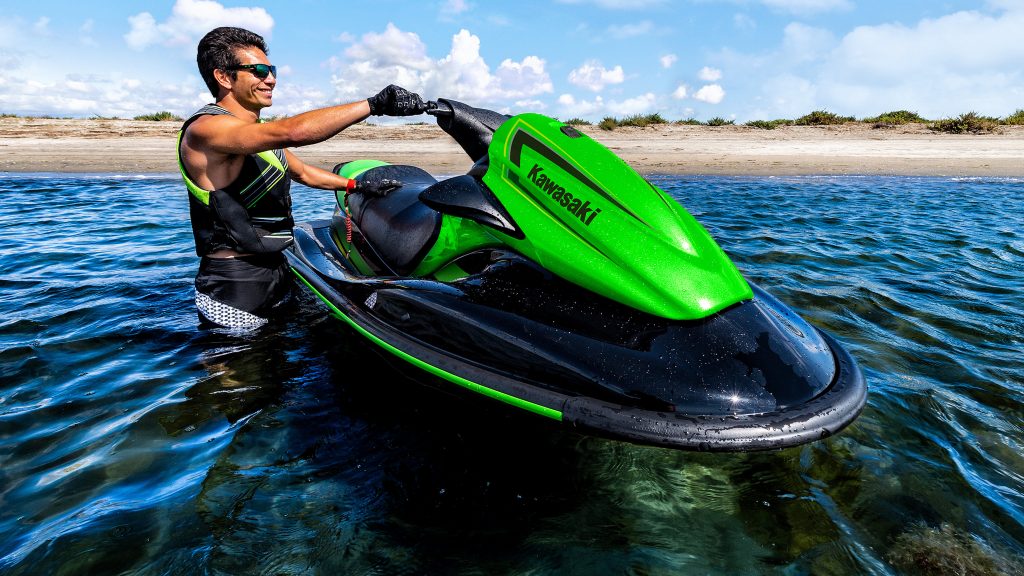
This is one example of a Product Disclosure Statement: “A $5000 excess will be applied to any claim for loss or damage to your personal watercraft’s motor caused by water inflow where there has been no impact with a solid object and no break in the hull. A $5000 excess also applies if your personal watercraft is uneconomical to repair due to water inflow damage and your personal watercraft is declared a total loss.”
This is policy-speak for forgetting to tighten the drain plugs or “bungs”. Take note: “water inflow when there has been no damage to the hull.”
So be sure to double check the drain plugs or “bungs” are in place before you reverse your craft into the water.
What if I crack my hull on a rock or a large piece of debris?
Most insurance companies will not cover damage caused by delamination, deterioration, corrosion, or electrolysis of the hull or deck. These would likely be warranty claims if the watercraft has been well maintained and still within the manufacturer’s warranty period.
However, your Jet Ski or personal watercraft is covered “where there is evidence of physical impact with a solid object” (such as a rock or a large piece of debris) whether it is being used by the registered owner or “someone you have entrusted it to” who is licenced and not affected by drugs or alcohol.
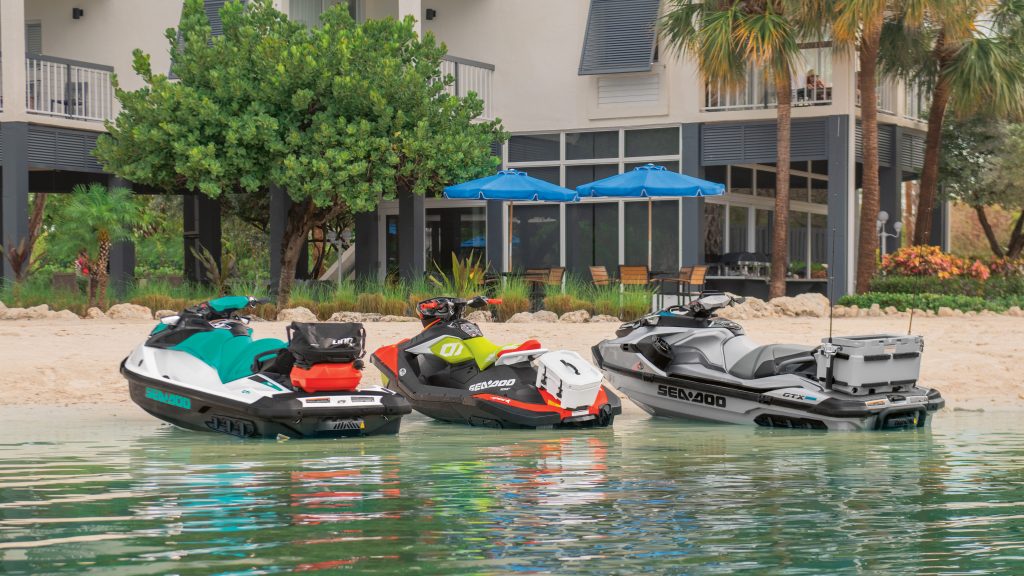
What if my Jet Ski or personal watercraft is burnt in a bushfire?
As one policy explains, standard insurance excess applies to “damage caused by fire, storm, impact with a solid object, sinking, and any other event not specifically excluded by the policy”.
Club Marine insurance policies have a 72-hour exclusion period for claims from fire, storms and flooding (to counter-act people taking out policies during natural disasters).
But once this 72-hour period has expired, you’re usually covered in such circumstances. Be sure to check if your policy covers you for such events. Some insurance companies offer instant cover.
What about my phone, camera and fishing gear? Are they insured?
Most insurance policies for Jet Skis and personal watercraft don’t cover cameras, phones, radios, or fishing gear. However, some insurers cover certain accessories, so check their policies. In most cases, insurance companies primarily cover the Jet Ski or personal watercraft, the engine, and the trailer.
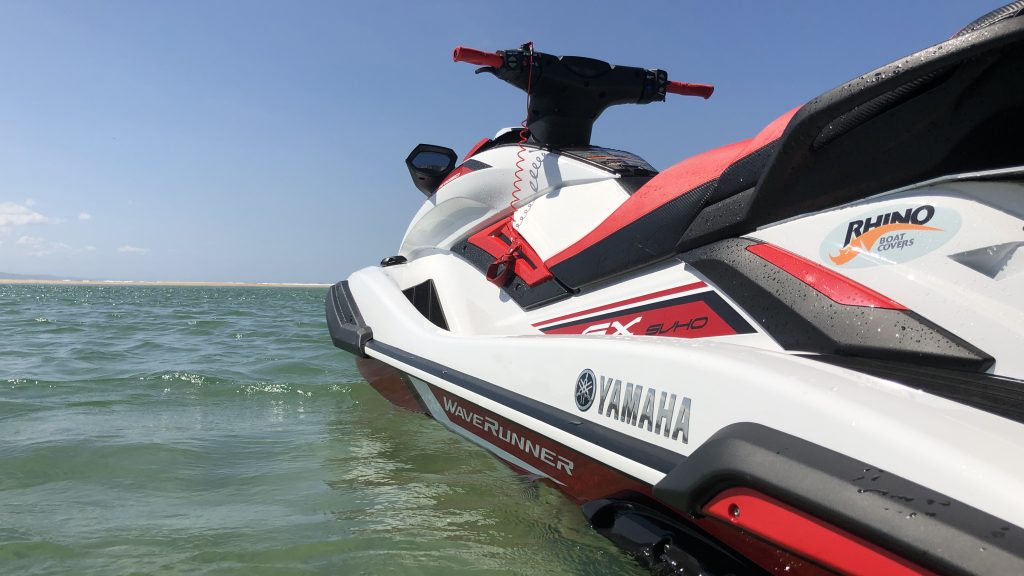
New for old replacement
Club Marine, Nautilus Marine and Yamaha Marine Insurance have a new-for-old replacement policy on watercraft up to two years old – if the Jet Ski or personal watercraft was bought new from an authorised dealer.
Once the watercraft is two years or older, the insurance switches to a “market value” policy, unless the customer has specified an “agreed value” policy.
Although technically not a new-for-old policy, Kawasaki Insurance agrees to insure personal watercraft for the purchase price paid for up to three calendar years from the date of purchase. The purchase price and date of purchase must be advised at the time of entering into the policy.
As this article was published (in late 2020), at the end of three calendar years Kawasaki Insurance automatically converts to a “market value” policy.
Lay up: save on insurance during winter
Most insurance companies for Jet Skis and personal watercraft offer a discount to owners who choose to store their craft for the months of the year they’re not using it.
The lay-up months (usually between one and four months of the year) are charged at a discounted rate.
However, it is worth noting the watercraft and trailer are only covered for theft during this period – or from accident damage when the watercraft and trailer are driven between the storage address and a recognised service location for maintenance.
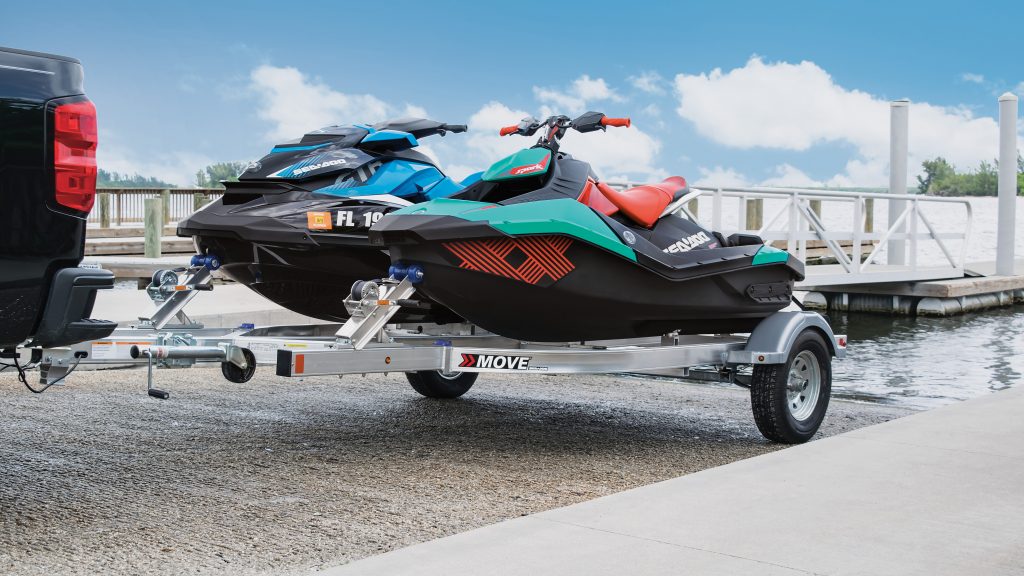
If the weather warms up unexpectedly and you decide to head out on the water and forget to take your watercraft off “lay up” – and you have an accident on the water – you are not covered.
In most cases you can take your Jet Ski or personal watercraft off “lay up” with a quick phone call and a small fee ($50 to $100 as a guide). However this phone call usually needs to occur during business hours on a weekday, so the policy can be activated prior to the weekend.
For this reason, many Jet Ski and personal watercraft owners maintain 12-month coverage with their policies, so they’re always covered no matter what. But it is a good way to save a little money if you know you’re not going to take the craft out in winter.
Where you store your Jet Ski or personal watercraft can affect your excess
Excess for theft of Jet Skis and personal watercraft can cost up to $1000 if the owner has “failed to take reasonable precautions against theft to safeguard and secure it when unattended”.
As one policy states: “A $1000 excess will be applied to any claim for theft where there is no physical evidence of violent and forcible removal of your personal watercraft”.
If your Jet Ski or personal watercraft is stored in a shared parking lot – such as a basement car park of a high rise building or apartment complex – your excess for theft increases to $2000, according to most insurers.
This is because, despite security cameras and gate passes, thieves have been known to steal Jet Skis and personal watercraft from basement car parks.
Most insurance companies want to see evidence of theft-prevention devices – and evidence of how the crooks stole the watercraft.
As one policy says: “In some cases we will require you to provide evidence that you had taken such precautions, for example evidence that locks or locked doors have been forced, chains cut etc.”
Which insurance company is the best?
We recommend getting a quote from as many insurance companies as possible, however in our experience it pays to take out a policy with a company that specialises in Jet Skis and personal watercraft, especially when it comes time to make a claim.
Be sure to compare the fineprint in each insurer’s Product Disclosure Statements, to see how their policies affect your specific circumstances.
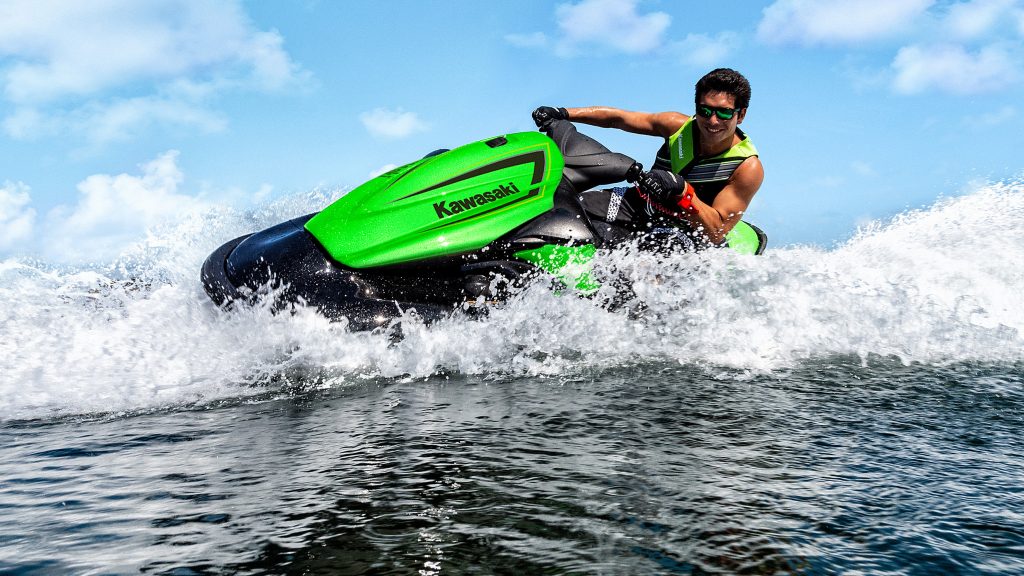
Club Marine is one of the largest insurers of Jet Skis and personal watercraft in Australia, and is a division of insurance giant Allianz, however it has a shorter cooling-off period and a 72-hour blackout on some claims after taking out a new policy.
Nautilus Marine is affiliated with Zurich Australian Insurance Limited, and was previously the underwriter for Yamaha-branded marine insurance.
Nautilus Marine is now the underwriter for Kawasaki Jet Ski Insurance. Be sure to check if there are any subtle differences between the two policies if you own a Kawasaki.
Yamaha Marine Insurance is now an affiliate of Yamaha Australia, but will insure other brands of Jet Skis and personal watercraft. This means Yamaha Marine Insurance (YMI) is the only insurance company for personal watercraft in Australia that is a subsidiary of a manufacturer.
Our research found the fees and exclusions are similar across all four insurance companies listed above, however there can be differences in the time it takes to process claims.
It is worth noting most Jet Ski and personal watercraft dealers receive a commission for referring you to their preferred insurance company. They may have the best offer, but it could also pay to get a quote from another insurer outside the dealership.
Be sure to read the fineprint and ask questions to determine which policy is best for you.
MORE: All our Sea-Doo coverage in one click
MORE: 2021 Sea-Doo prices
MORE: All our Yamaha coverage in one click
MORE: 2021 Yamaha WaveRunner prices
MORE: All our Kawasaki coverage in one click
MORE: 2021 Kawasaki Jet Ski prices



